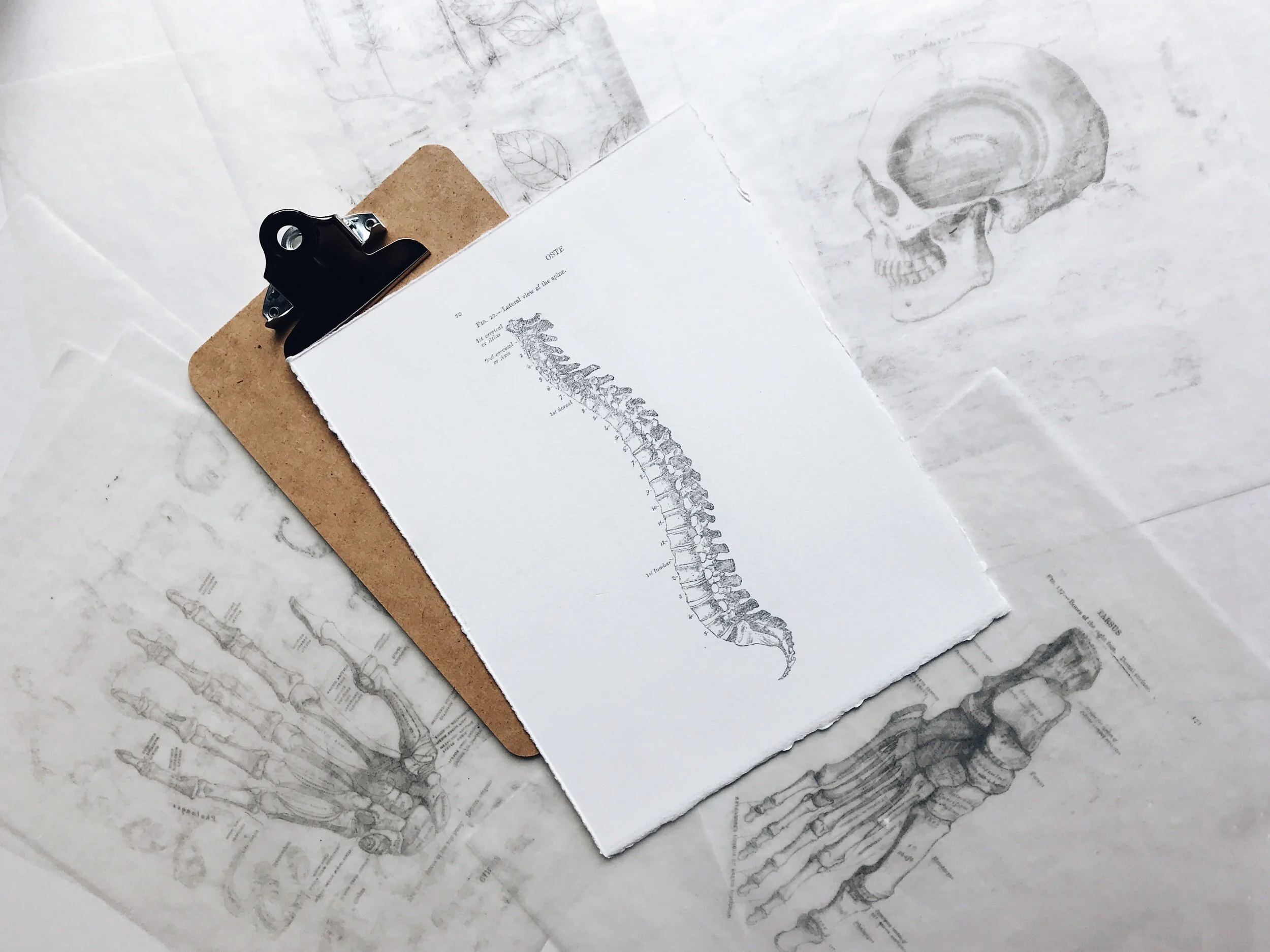So anyway, common myths about back pain.
There are dozens upon dozens of myths out there about what leads to back pain, what you should do to prevent back pain, and what kinds of treatments may solve your back pain troubles.
Today, I am here to tell you that you should think again about what may be causing your aches and pains and urge you to think twice about your course of treatment.
My goal as a massage therapist is to help relieve your pain. But what if many of the commonly suggested treatment solutions are ineffective at best? Throw out everything you know about back pain, and let’s take a look at some of these claims to see whether or not they stand up to science.
Have You Made Any of These Frequent Misconceptions About Posture and Pain?
You probably have heard that poor posture causes back pain. In fact, it’s likely that you heard it frequently from your parents when you were growing up as they were encouraging you to stand up straight.
And chances are you’ll find lots of experts claiming this to be true on the internet as well: chiropractors and doctors, physical therapists and personal trainers, and yes, massage therapists, all telling you the importance of posture if you’re looking to avoid or alleviate back pain.
If you have a job that is mainly desk bound, what I say to my clients is, it’s not how you are sitting at, but what you are doing when you are NOT working that is going to have the greatest impact on your back. Diverse movement for the win.
Perhaps you’ve heard that an increase in the arch of the lower back during pregnancy is the cause of many women’s discomfort while expecting. However, an in-depth analysis measuring the arch of the lower back in 12 healthy women during their first and third trimesters of pregnancy was conducted in order to discover if there was any truth to this myth by monitoring changes in the curvature of the spine.
The point of this study was to locate any direct correlation between postural changes and back pain. While back pain is a common occurrence for many women in pregnancy, these postural changes were not found to be the cause of back pain at all.
The cause of the back pain was that they were carrying around another human being in the making, and the connective tissue was under strain of supporting the baby, basically suspended in mid air!
What You Might Not Know About Bulging Discs: Are You Aware?
Herniated discs and degenerative disc disease are both common problems that will show up on MRIs, but these structural changes may not be the actual cause of your back pain.
While many may start to consider surgery to alleviate pain, fixing these abnormalities by going under the knife actually may not give you the reprieve you’re hoping for.
Just how frequently is pain associated with bulging or degenerated discs? In one well-known study of 98 people with no back pain symptoms, 52 percent had a herniated or bulging disc at one or more levels, the rate of which increased with age. But they did not have pain symptoms that would indicate a problem or structural change in their back.
Why? Because “the discovery by MRI of bulges or protrusions in people with low back pain may frequently be coincidental.”
In fact, if you examine many major joints in the body, you are bound to find something wrong with them, pain or no pain. Whether that pain be located in the pelvis and hips or in the knees, operable joint issues may not actually be the issues.
Of course, this does not mean that herniated discs or disc degeneration don’t cause pain in some people. But just remember that many people living their lives without back pain also have bulging discs.
Working with a massage therapist to alleviate pain may be a viable option to treat your pain effectively.
Sometimes clients get worried when they are told that their spine is showing signs of wear and tear, and the way I explain that to them is that anyone who has been upright for more than 25 years is going to show signs of wear and tear. Phew!
Is There a Correlation Between Core Strength and Back Pain?
Another common misconception about back pain is that having a strong core is essential to having a pain-free, healthy back. But what evidence is there to support this claim?
Numerous studies have been conducted to examine whether core strengthening exercises are the solution to lower back pain. Take a look at this study, though, which found that in individuals with little abdominal muscle strength, there was no statistically significant difference between the group that was performing core strengthening exercise and back education and the group that relied on back education alone.
This study divided participants into two groups: a group of people with chronic lower back pain who received muscle control therapy and a second control group that received placebo-like treatment. The first group received outpatient physical therapy over the course of 12 weeks, with exercises designed to improve the function of specific muscles in the lower back. The second group receiving the placebo treatment had de-tuned ultrasonic therapy.
The results? This motor-control-focused exercise did help with muscle recovery but did nothing for back pain.
What we can learn from this is that while exercise is generally good for us, current evidence shows us that strengthening our core is not a magic cure-all that will free us from back pain.
The reason I include this information here is because, again, some clients get told ‘I have a weak core’ and then have very negative self talk around it. In all my years of running, weight lifting, and now cycling, my core strength is awful! I was quite shocked how weak I am in certain movements. The trick is, again, diverse movement, and if it’s movement that you enjoy, winner.
So What Exactly Causes Back Pain?
If posture, bulging discs and poor abdominal strength are not the causes of back pain, then what is? If you suffer from chronic back pain, it might be frustrating to hear that these perceived causes might not be the root of your back pain woes at all.
So just what is causing your back pain? Here are a few causes that might be leading you to feel pain and discomfort in your back:
● Muscle strain or injury, leading to back spasms, discomfort and even weakened muscles over time. Massage can help with this.
● The large muscles in your upper back are prone to irritation, either because of a lack of strength or overuse. Massage can relieve this irritation and improve range of motion.
When should you see a doctor about your back pain?
There are a handful of red flags in regards to back pain. See your doctor right away if
● You have numbness or obvious weakness anywhere in your back, hips, groin or legs or incontinence. (this of course, worst case scenario)
● You fell or had an injury that involved impact.
Also, if you’ve had the pain for more than 3-4 weeks, it’s spreading or getting worse, or it’s affecting how you sleep, get checked out. Any kind of pain that affects sleep is definitely the work of the devil.
Back pain is no joke. You feel it with every move, and it affects your life in all kinds of ways.
With an accurate medical diagnosis from your GP or healthcare professional (not massage therapists, not within our remit) together we can create a healing, therapeutic massage plan to relieve your pain and get your life back on track. Ready to see how regular sessions with a massage therapist can alleviate your back pain?
Stuff you haven’t tried for diverse movement, that you may find you enjoy are
walking, but take the pace up a bit, and make sure you get a swing motions in your hips
A dance class. I have recently re discovered my love of tap dancing much to the annoyance of my neighbours
Pilates and Barre, looks easy, you legs will cry afterwards
wild swimming, another recent development
So there you have it.
Diverse movement for the win. Love your spine, and your spine will love you back. No pun intended.
Onward!
Elizabeth

